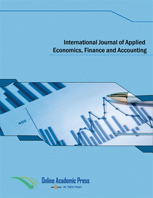Optimizing expected policy outcomes through creative problem structuring: Police human resource development policy in the southeast Sulawesi regional police, Indonesia
DOI:
https://doi.org/10.33094/ijaefa.v17i1.1003Keywords:
Creative problems structuring, Development of police human resources, Expected policy outcomes, Regional police.Abstract
This study aims to investigate the problem structuring process using creative methods to create well-structured problems, and how it can optimize the expected policy outcomes of human resource development in regional police. This study uses a qualitative research method by integrating qualitative data from semi-structured interviews and administrative data. Five informants were purposively selected, four of whom were authorized officials in the field of human resource development at regional police institutions, and the other was a prominent civic organization activist. The interview data were analysed using qualitative interactive models, while directed content analysis was applied to administrative data. The results of the study show that the problem structuring process in human resource development policies for regional police is limited to identifying the main elements of problem definition through the partial use of brainstorming methods and classification analysis. Such a problem structuring process cannot create well-structured problems that optimize expected policy outcomes of human resource development. However, the use of creative problem-solving methods in a comprehensive manner can optimize the expected policy outcomes from the development of more critical and collaborative human resource development in the regional police force.
Downloads
Published
Issue
Section

This work is licensed under a Creative Commons Attribution-NonCommercial 4.0 International License.




